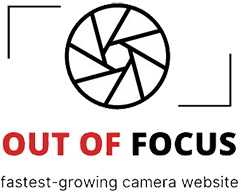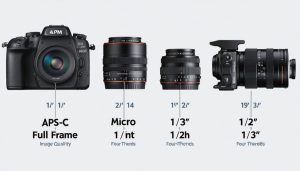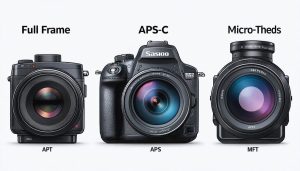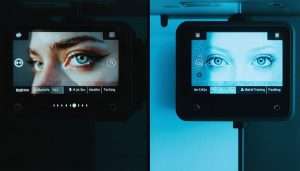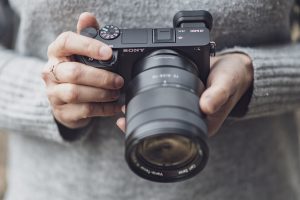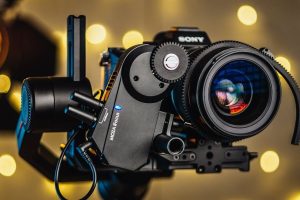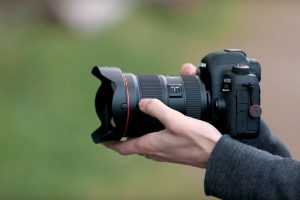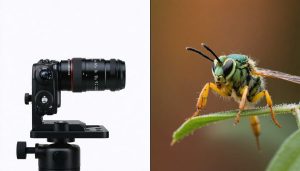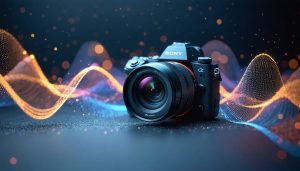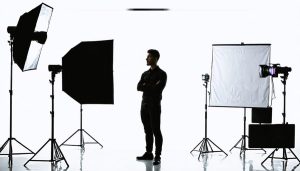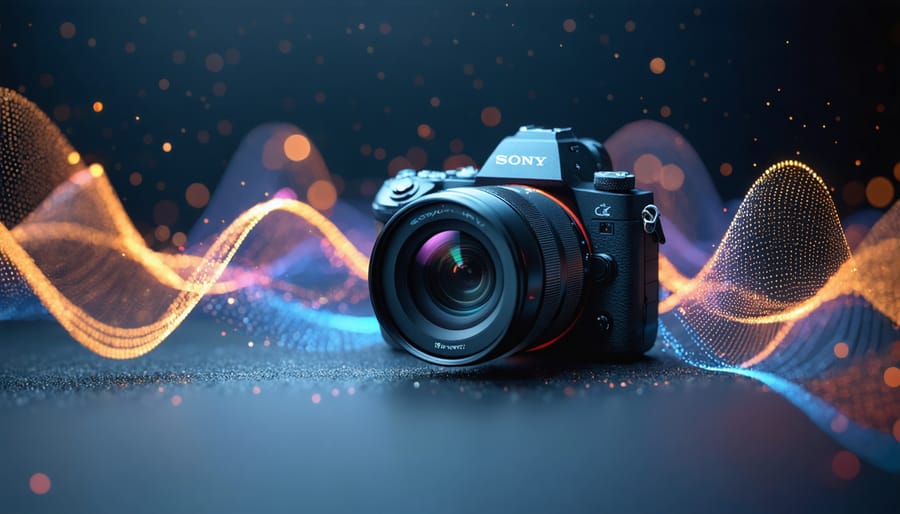
Sony’s groundbreaking AI camera autofocus system has fundamentally transformed how photographers capture decisive moments. By harnessing deep learning algorithms trained on millions of images, this technology can now detect, track, and predict subject movement with uncanny precision – whether you’re shooting fast-moving wildlife or capturing subtle expressions during portrait sessions.
The system’s real-time tracking capabilities process data from 693 phase-detection points at up to 60 calculations per second, delivering razor-sharp focus even in challenging conditions. For professional photographers, this means consistently nailing focus on a bride’s eyes during dim church ceremonies or keeping track of athletes during crucial game moments. For enthusiasts, it translates to significantly higher keeper rates and the confidence to tackle more challenging subjects.
This intelligent focusing system represents more than just an incremental improvement – it’s a paradigm shift in how cameras understand and interact with scenes, enabling photographers to focus more on composition and timing rather than technical focusing challenges.
How Sony’s AI Autofocus Actually Works
Real-Time Tracking and Recognition
Sony’s real-time tracking and recognition system represents a significant leap forward in autofocus technology, combining artificial intelligence with advanced subject detection algorithms. The system continuously analyzes the entire frame, identifying and tracking subjects with remarkable precision, even in challenging shooting conditions.
At its core, the technology uses pattern recognition to identify various subjects – from human faces and eyes to animals and objects. What sets it apart is its ability to maintain focus even when subjects temporarily move behind obstacles or briefly leave the frame. When photographing people, the system automatically prioritizes eye detection, switching seamlessly between left and right eyes as subjects move or change position.
Wildlife photographers particularly benefit from the system’s ability to recognize and track animal eyes, including birds in flight. The AI can distinguish between different types of subjects and maintain focus even in low-contrast situations where traditional autofocus systems might struggle.
The real-time tracking activates with a simple half-press of the shutter button, after which it tenaciously follows the subject using color, pattern, and distance information. For sports and action photographers, this means consistently sharp shots of fast-moving subjects without the need to constantly readjust focus points manually.
Perhaps most impressively, the system learns and adapts during use, becoming more accurate at recognizing frequently photographed subjects and scenarios. This machine learning capability ensures the tracking becomes more reliable over time, making it an increasingly valuable tool for photographers who regularly shoot similar subjects or situations.
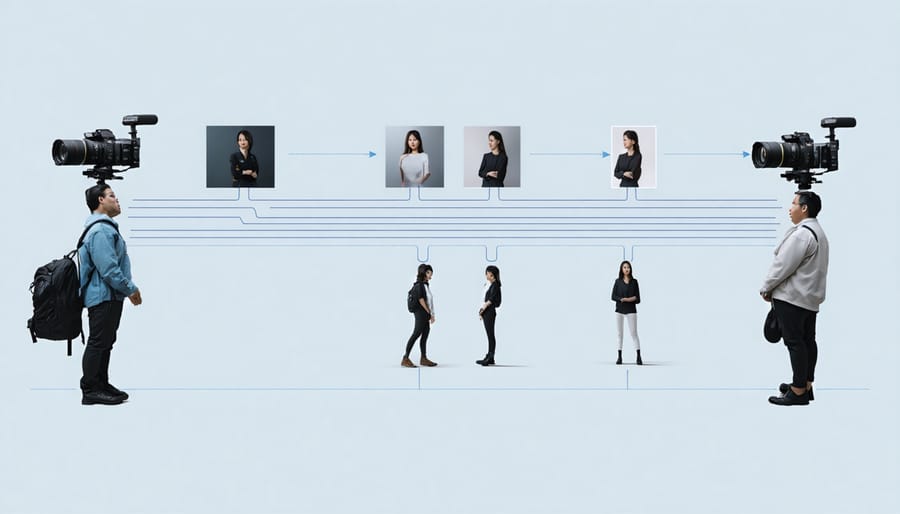
Deep Learning Algorithms in Action
At the heart of Sony’s revolutionary autofocus system lies sophisticated deep learning algorithms that process visual information in real-time. These AI models have been trained on millions of images, learning to recognize and track subjects with remarkable precision. The system uses a two-stage approach: initial subject detection followed by continuous tracking.
The first stage employs convolutional neural networks (CNNs) to identify subjects in the frame, whether they’re human faces, animals, or vehicles. These networks analyze patterns and features at different scales, creating a detailed understanding of the scene. What’s particularly impressive is how the system can distinguish between multiple subjects, prioritizing them based on their position and importance in the frame.
The tracking stage utilizes recurrent neural networks (RNNs) that predict subject movement and maintain focus even when subjects are partially obscured or moving erratically. This predictive capability is what gives Sony’s AF system its seemingly magical ability to stay locked on fast-moving subjects.
The AI processes this information in milliseconds, making thousands of micro-adjustments per second. It’s constantly learning from each shooting session, adapting to different scenarios and improving its performance. This adaptive learning means the system becomes more attuned to your shooting style over time, making it an incredibly powerful tool for both spontaneous action shots and carefully composed portraits.
Game-Changing Features That Matter
Eye AF: Beyond Human and Animal Detection
Sony’s Eye AF technology has evolved far beyond its initial human eye detection capabilities, now offering remarkable versatility across different subjects. The system can identify and track eyes in humans, animals, and even birds, maintaining sharp focus even in challenging conditions.
For human subjects, the technology excels at detecting and tracking eyes even when faces are partially obscured or turned at angles. This proves invaluable for portrait photographers who need to maintain focus during dynamic shoots. The system works equally well whether shooting stills or video, making it a powerful tool for hybrid creators.
In the wildlife photography realm, Sony’s Animal Eye AF demonstrates impressive accuracy across various species. From domestic pets to wildlife, the system can identify and track animal eyes with remarkable precision. The technology is particularly noteworthy for its ability to maintain focus on fast-moving subjects, such as dogs running or birds in flight.
Bird Eye AF, introduced in newer models, represents a significant breakthrough for wildlife photographers. The system can detect and track the tiny eyes of birds, even in flight or partially hidden by foliage. This capability has transformed bird photography, allowing photographers to focus more on composition and timing rather than struggling with manual focus adjustments.
The system’s intelligence continues to improve through firmware updates, expanding its recognition capabilities to new subjects and scenarios, making it an increasingly valuable tool for photographers across different genres.
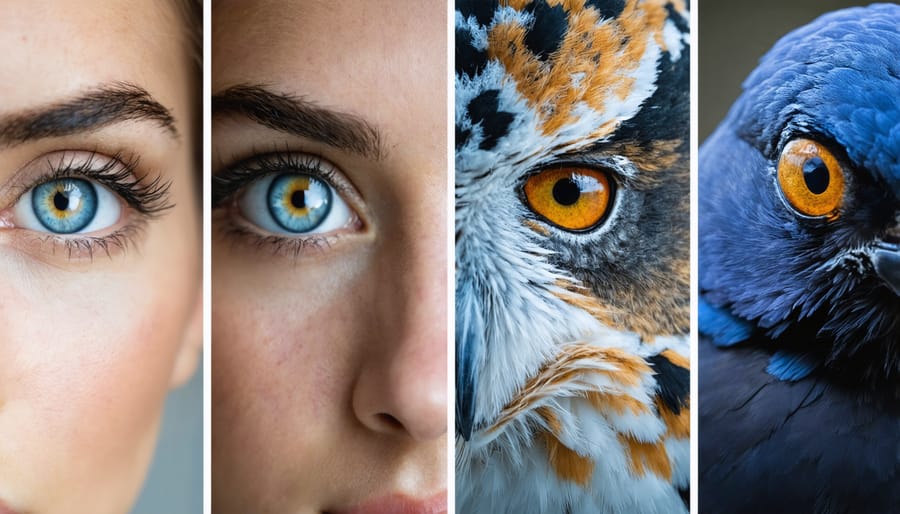
Vehicle and Object Tracking
Sony’s AI autofocus system truly shines when it comes to tracking vehicles and objects, offering specialized modes that make capturing fast-moving subjects easier than ever. The system can identify and lock onto various vehicles, including cars, trains, and airplanes, maintaining sharp focus even at high speeds or challenging angles.
What makes this tracking particularly impressive is its ability to recognize specific parts of vehicles, such as the driver’s compartment or front grille, ensuring the most crucial elements remain in focus. When a vehicle temporarily passes behind an obstacle, the AI remembers its trajectory and quickly reacquires focus once the subject reemerges – a feature particularly valuable for motorsport photography.
Beyond vehicles, Sony’s object tracking demonstrates remarkable versatility. The system can identify and track a wide range of inanimate objects, from sporting equipment to consumer products, making it invaluable for commercial photography. For instance, when photographing a tennis match, the AI can maintain focus on the ball despite its erratic movement patterns.
The real magic happens in challenging lighting conditions, where traditional autofocus systems often struggle. Sony’s AI maintains consistent tracking performance even in low-light situations or when subjects are backlit, thanks to its advanced pattern recognition capabilities. Photographers can customize tracking sensitivity and speed settings to match their specific shooting scenarios, ensuring optimal performance whether capturing high-speed racing events or more controlled product shots.
Predictive Focus Performance
Sony’s AI autofocus system uses advanced predictive algorithms to anticipate where your subject will move next, making it particularly effective for challenging scenarios like sports, wildlife, and event photography. The system analyzes movement patterns in real-time, calculating not just current position but also likely future positions based on observed behavior.
Think of it as a chess player thinking several moves ahead. When tracking a bird in flight, the AI doesn’t just follow its current trajectory – it learns the bird’s flight patterns and anticipates sudden changes in direction or speed. This predictive capability means the camera can maintain focus even when subjects temporarily disappear behind obstacles or make unexpected movements.
The system processes multiple data points simultaneously, including subject velocity, acceleration, and historical movement patterns. For human subjects, it incorporates detailed body position analysis, recognizing poses and predicting likely next movements based on common human motion patterns. This is particularly valuable when photographing athletes or dancers, where complex movements can challenge traditional autofocus systems.
What makes this technology especially impressive is its learning capability. The more you shoot certain types of subjects, the better the system becomes at predicting their movements. This adaptive intelligence means that whether you’re capturing a soccer match or tracking birds in flight, the focus accuracy improves over time through real-world use.
Real-World Performance Results
Sports and Action Photography
Sports and action photography is where Sony’s AI autofocus system truly shines, demonstrating its remarkable capabilities in high-stakes shooting scenarios. The system’s ability to track fast-moving subjects at up to 120 calculations per second means you’re far more likely to capture that decisive moment in a football match or track a gymnast through a complex routine.
In real-world testing, the system proves particularly impressive when following athletes in unpredictable movements. For instance, during basketball games, the AF system maintains focus on players as they weave through defenders, jump, and change direction suddenly. The camera’s ability to recognize and stick to the subject, even when temporarily obscured by other players, is nothing short of remarkable.
What sets Sony’s system apart is its ability to recognize and track specific body parts. When photographing runners, the AF system locks onto the athlete’s eye or head, maintaining sharp focus even as they sprint past at full speed. This feature is especially valuable in scenarios where traditional focusing methods might struggle, such as motorsports photography where subjects move at extreme velocities.
The system’s customizable tracking sensitivity allows photographers to fine-tune its response based on the specific sport or action being captured. For fast-paced sports like hockey or soccer, setting a more responsive tracking helps maintain focus on rapidly moving players, while slightly relaxed settings work better for more predictable movements in sports like tennis or baseball.
Even in challenging lighting conditions, such as indoor arenas or evening games, the AF system maintains its reliability, proving particularly valuable for professional sports photographers working under demanding conditions.
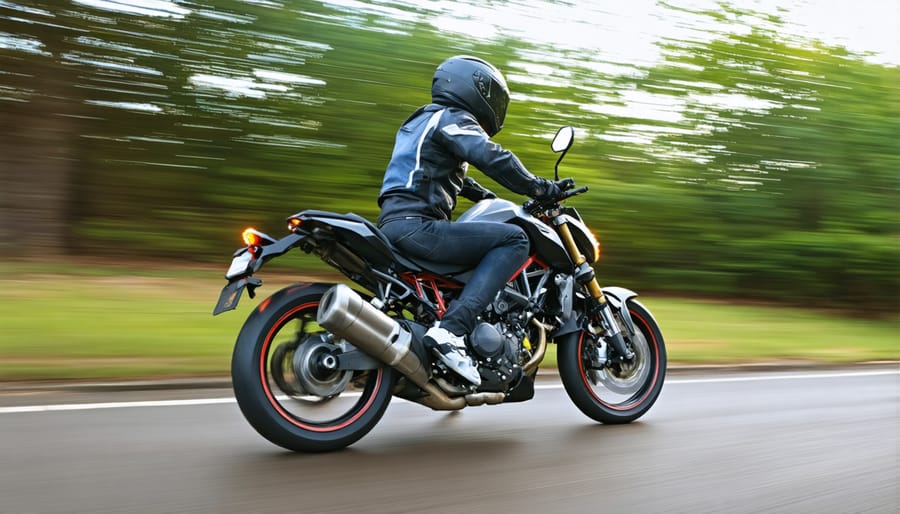
Portrait and Event Photography
Sony’s AI autofocus system truly shines in portrait and event photography, where capturing fleeting expressions and precise eye focus is crucial. The system’s ability to detect and track human faces and eyes in real-time has transformed how photographers approach people-focused shoots.
In portrait sessions, the system consistently locks onto the subject’s eyes, maintaining sharp focus even when they move or change poses. What’s particularly impressive is how it handles slight head turns and profile shots, seamlessly switching between eyes to maintain optimal focus. This reliability allows photographers to concentrate more on composition and directing their subjects rather than wrestling with focus points.
Event photographers will appreciate the system’s capability to identify and track multiple faces in a scene. At weddings, for example, it can quickly switch focus between the bride, groom, and other key participants, ensuring important moments aren’t missed due to focus hunting. The system works remarkably well in challenging lighting conditions, such as dimly lit reception venues or backlit outdoor ceremonies.
The face and eye detection also performs admirably with masks, partial facial obstruction, and even when subjects are wearing sunglasses. This adaptability proves invaluable for photojournalistic situations or street photography where subjects may be in motion or partially obscured.
For group shots, the system intelligently prioritizes faces while maintaining awareness of depth and composition. This is particularly useful during family portraits or corporate events where multiple rows of people need to be in focus. The quick response time and accuracy mean fewer missed shots and more keepers in fast-paced environments.
Limitations and Future Developments
While Sony’s AI autofocus system represents a significant leap forward in camera technology, it still faces several notable limitations. Low-light performance can occasionally challenge the system’s ability to maintain consistent tracking, particularly in extreme conditions. The system’s effectiveness can also be influenced by lens quality and compatibility, with older lenses potentially not fully utilizing all AI capabilities.
Looking ahead, Sony is actively developing solutions to address these challenges. The integration of dynamic vision sensing technology promises to improve tracking in challenging lighting conditions. We can expect to see more sophisticated subject recognition algorithms that can identify and track an even broader range of subjects with greater precision.
Future developments may include enhanced machine learning capabilities that adapt to individual shooting styles, more seamless integration with third-party lenses, and improved performance in extreme weather conditions. The potential for real-time learning and adjustment based on shooting scenarios could revolutionize how photographers interact with their equipment.
While current limitations exist, Sony’s commitment to innovation suggests these challenges will likely be addressed in upcoming iterations, further cementing their position as a leader in camera autofocus technology.
Sony’s AI autofocus technology represents a significant leap forward in photography, making complex focusing scenarios more manageable while delivering consistently sharp results. For photographers working in demanding situations like wildlife, sports, or event photography, this innovation offers a clear advantage in capturing decisive moments. The system’s ability to recognize and track subjects intelligently, combined with its real-time processing capabilities, makes it a valuable tool for both professionals and enthusiasts.
To get the most out of Sony’s AI autofocus, photographers should invest time in understanding their camera’s specific focusing modes and customization options. Practice with different subjects and scenarios will help build confidence and maximize the system’s potential. While the technology is impressive, it’s important to remember that it serves as a tool to enhance, not replace, fundamental photography skills.
Looking ahead, Sony’s commitment to advancing AI-driven features suggests even more exciting developments on the horizon, making it an excellent time to embrace this technology.
